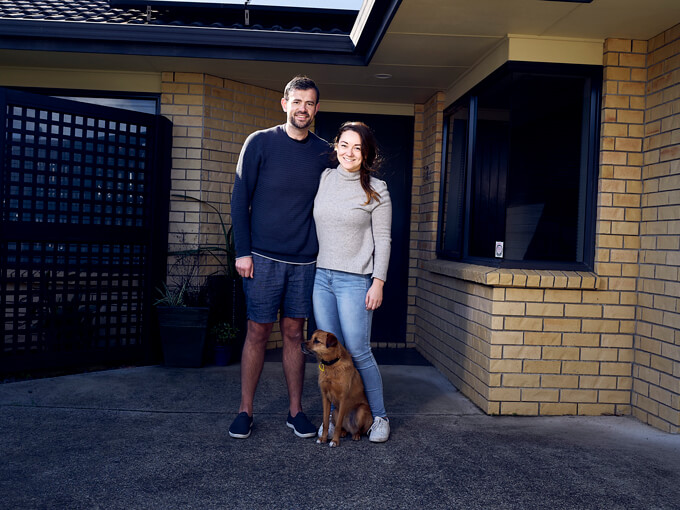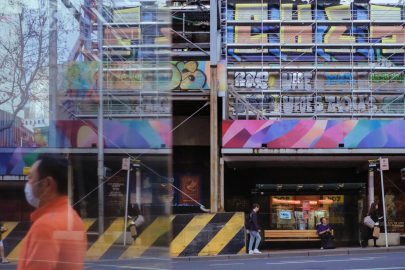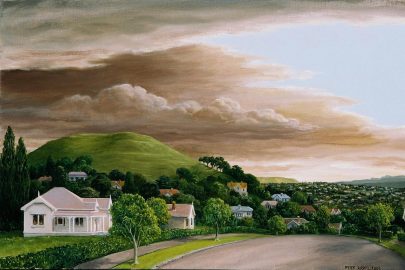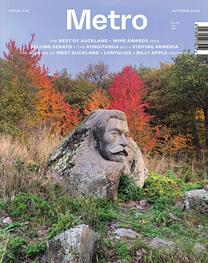Oct 16, 2019 Property
Onehunga, the traditionally working-class suburb at the tip of the Manukau Harbour, has undergone significant change over the past few years as house prices and rents have risen at a rate above the citywide average.
Kris Ah Ta moved to Onehunga in 1997, a couple of years after the Dress-Smart mall opened. A single mum working as a teacher aide with three little girls, she felt Onehunga had everything she needed — lots of public transport options (so it didn’t matter if she didn’t have a car), amenities such as libraries, banks and supermarkets, schools all the way from new entrants to college and, perhaps most important of all, a real sense of home. “We felt safe, we built a community,” she says. “The kids were in and out of each other’s homes.”
Ah Ta is 52 but looks younger, her face smooth and lightly freckled, a few streaks of white in her curly black hair. She speaks with a teacher’s authoritative air: she’s not happy with the number of 1,2,3 Dollar Shops lining Onehunga Mall, many of which are in shopfronts retaining their original facades. The “huge draw” of Dress-Smart is wasted without better, more unique places to visit on the main drag, she says. She loves that her daughters still say hi to “Papa Patel” at the corner dairy and she loves her neighbours, but she’s displeased with new housing developments in the suburb, which to her seem to be pushing out families and changing the very character of Onehunga that first drew her in.
Onehunga, one of Auckland’s oldest suburbs, is undergoing a period of regeneration. Auckland Council has been carrying out projects over the past three years, including a $30 million investment to improve the Taumanu Reserve down by the water and $1.2 million to upgrade Onehunga Mall. In many ways this is welcome —who doesn’t want their home to grow and improve? But Onehunga has firm working-class roots and a longstanding ethnic diversity, and there is some suspicion among residents about how the developments might alter the fabric of the tight-knit community.
Over the fence from the Church St home Ah Ta lives in with all three of her now-grown daughters (they’ve only moved once in the past 22 years) is a new Housing New Zealand (HNZ) development on Galway St. Thirty-four larger units are being replaced with 71 one- and two-bedroom dwellings. It’s good HNZ is using the space (and Auckland does have a huge undersupply one- and two-bedroom homes), but why aren’t any of the new places designed for families, Ah Ta asks. “It changes the feel of the area, the families get moved out — they just get pushed and pushed.” Some of her neighbours left in HNZ homes feel uncertain about their own futures — will they be asked to move away if another new development is announced? And don’t even talk to Ah Ta about the $500,000- $600,000 KiwiBuild apartments selling as part of a mixed development on Onehunga Mall. “I have a beef with that. It was exciting at first, like they were addressing the issue [of the housing crisis]. But I’m finding that it’s just so ridiculous. The developers set aside a quota for affordable housing, yet it’s so out of reach for people who need it.” More housing developments are in the works in the suburb, including Fabric , a “pocket neighbourhood” with one-, two- and three-bedroom apartments for sale.
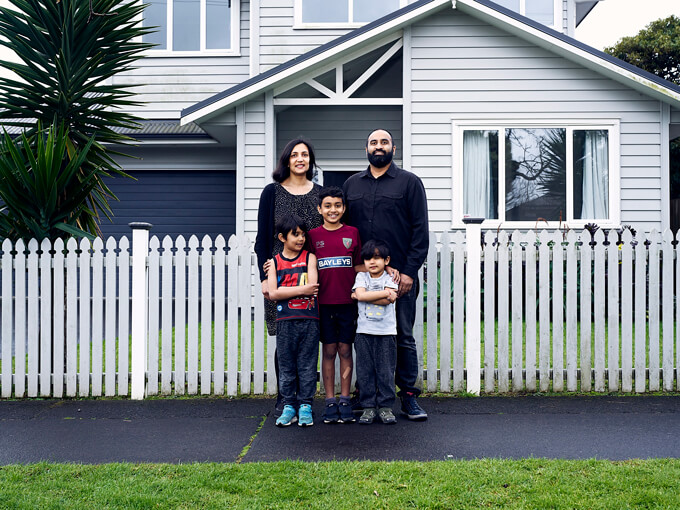
Six years ago, Ah Ta and her daughters, two of whom were teenagers at the time, tried to buy their rental as a family when the landlord sold up. The four of them scraped together a deposit but it wasn’t enough — the 20% was more than they could afford. Someone else bought it, but kept them on as tenants. Now, house prices are so high Ah Ta and her daughters are considering whether to buy in Mangere or Manukau, away from their community, just to get a foot on the property ladder. That, of course, begs another question — how soon until prices south of Mangere Bridge respond to demand from potential buyers pushed out of areas like Onehunga, and what happens to the long-time renters there who themselves might have liked to buy a home one day? Ah Ta is sick of the cycle (“Do people have to keep moving?”), but she, like most people, desperately wants the financial security that comes with owning your own home — not just for her, but for her daughters once she’s gone.
At the end of July, the Real Estate Institute of New Zealand (REINZ) showed the median house price in Onehunga was $920,100, up nearly 11% on the 12 months prior. For comparison, house prices in Auckland overall remained flat in that year, at a median price of $850,000. Ten years ago, the median house price in Onehunga was $415,000, less than the median for Auckland overall ($436,000). By the end of July 2014, five years ago, that had changed: the median for Onehunga was $44,000 higher than the Auckland median of $606,000. In the past decade, house prices all over the city boomed, with the median overall increasing nearly 95%. In Onehunga, the median more than doubled.
Earlier this year, REINZ data showed Onehunga had the second-fastest-growing median house price, after Takapuna. That growth has since slowed, in part due to the kinds of home being sold — when more three- or four-bedroom homes are sold, the median price tends to rise, but when smaller places make up most sales, the median tends to drop, REINZ chief executive Bindi Norwell says.
Despite the rapid increase in prices, Onehunga is still one of Auckland’s more affordable suburbs. It has good growth potential, Norwell says, in large part because it’s relatively central, with great public transport connections, and also because of the development by both Panuku and private companies, all of which are attractive to home buyers. “It’s got great character homes, there’s really good cafes and shops and sea views. It will just keep getting stronger.”
Onehunga is enjoying a moment of increasing cultural capital previously experienced by suburbs such as Grey Lynn or Ponsonby, where — unlike the old-money eastern suburbs, which many young people are not interested in moving to — it’s perfectly balanced between seeming not too posh and offering several spots to get a decent coffee within a stone’s throw of the main centre. This accrual of cultural currency is ever-shifting and, unlike a suburb’s intrinsic virtues such as sea views, completely manufactured — and can therefore fade. The very “realness” that can give a place an air of cool (making it attractive to a certain kind of young first-home buyer or renter) is undone at a certain point, as house prices continue to rise and the area attracts ever-wealthier residents. At that point, the focus shifts and starts again elsewhere — as has arguably happened in Onehunga as Grey Lynn’s bohemian star fades.
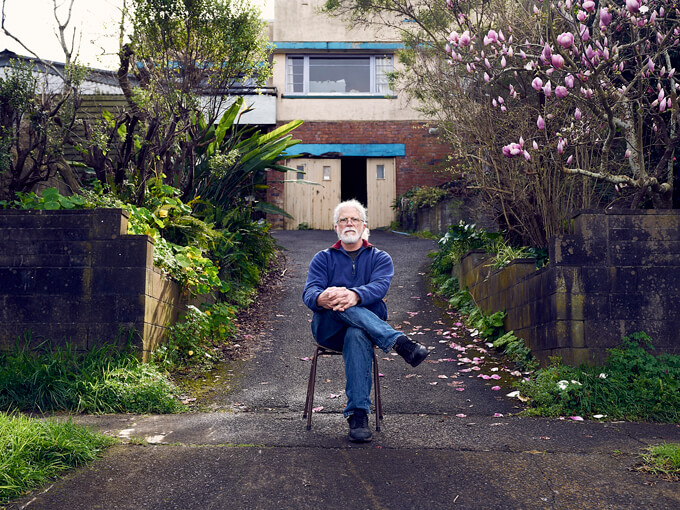
Onehunga’s housing market now reminds Kris Ah Ta of Ponsonby in the 1970s, when she came over from Samoa as a little girl. “It used to be Pasifika families and now it’s one of the most expensive places to buy a property.” Higher-income earners find themselves locked out of areas they perhaps assumed they’d be able to afford to own a home in as even wealthier home buyers snap up properties, so are forced to buy in cheaper suburbs, which then drives house prices up in those areas, pushing the lower-income earners further out again, and on the cycle goes. It’s a knock-on effect, and one that invokes that tricky-to-define phenomenon: gentrification.
Gentrification is a nebulous term, commonly used as shorthand to mean too many wealthy white people moving into an area (and often used by wealthy white people who have themselves moved into an area but don’t want any more of their kind following behind and ruining the “authentic” vibe of their new neighbourhood). Coined by British economist Ruth Glass in the 1960s to describe the change felt in neighbourhoods where upper-class “gentry” moved into traditionally working-class suburbs in London, the term is so widely and inconsistently used today that it’s hard to nail down a consistent working definition.
In talking to people in Onehunga, Metro found gentrification cropped up in relation to house prices increasing; low-income (mainly brown) families having to move away due to rising rents or their Housing NZ homes being demolished to make way for medium-density housing; and higher numbers of relatively more wealthy (usually white) people moving in and changing the ethnic makeup of the suburb. The word was used as a kind of shorthand for the anxiety residents, both long term and new, felt about Onehunga losing its spirit in the face of change.
I talked about the spectre of gentrification with Ah Ta’s oldest daughter, Ash, at Mr T’s, which does great Vietnamese food (try the bánh mí) and sweet cabinet treats, and bakes its own bread. It’s Ash’s favourite place to pop in along Onehunga Mall, and Kris’ favourite, too. It’s funny, because there were certain grumblings when it opened that Mr T’s was in fact a sign of Onehunga’s encroaching gentrification, because it was a bit, well, hipsterish. Back in the day, this place used to be a Bakers Delight, and the owners would give Ash free bread in the morning on her way to school. Mr T’s is perhaps a small-scale lesson that change is a double-edged sword and no one demographic has a monopoly on enjoying trendy cafes. Mr T’s is pure Onehunga; friendly and welcoming, and now a local favourite, firmly part of the community.
Onehunga has been growing the whole time Ash has lived here, but things started to ramp up in the past three years. “That’s when it really started. There was talk of building new areas, new homes. People were for it but then they were against it. Who exactly are the homes appealing to — are they for the families who are already here or the people who are coming in here?” Ash feels possessive — this is her home, and she likes it the way it is now: the mix is just right.
Ash worries poorer brown and Asian families will be pushed out, with wealthier white families moving in to replace them. Part of what makes Onehunga special is its ethnic diversity — it’s also partly why Ash, as a Samoan-Chinese woman, never feels out of place here. “It’s not like there haven’t been white people living in Onehunga, and it’s not like I’m against white people, but I am scared we’ll lose that spirit,” she says. “People come together if there’s a cause to be addressed. We’ve always had a lot of festivals, and what I loved growing up was seeing all the regulars on the street — they come say hi. You see them getting older and they still come out — it’s just a really neighbourhood vibe.” But many of her former neighbours have already moved away because their rents got too high, or they wanted to buy and couldn’t afford to in Onehunga. “We’re all really concerned about those families who can’t afford to get a new house, they can’t afford rent. We were just sad about it. There are families who have been in the area so long and we grew up with those kids.”
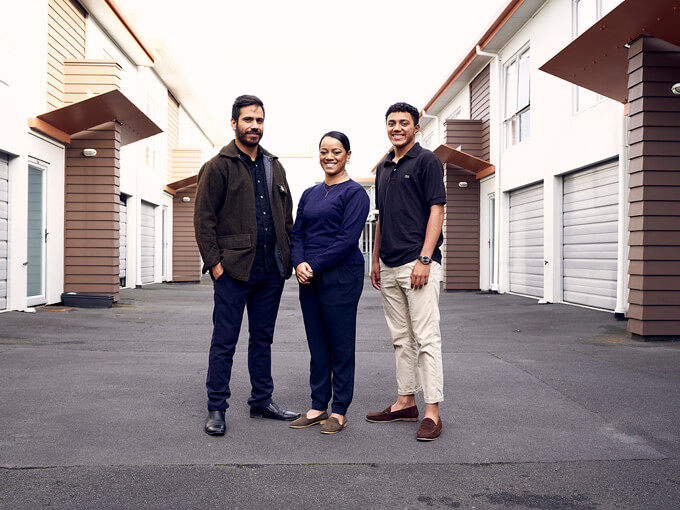
Ash had hoped to raise her own kids on Onehunga and give them the life she’d had — free range, safe, surrounded by friends and adult neighbours there to keep an eye out. She spent much of her own childhood browsing in the Hard to Find Bookshop — in fact, she’d hoped her boyfriend might propose to her there — but the place has packed up and moved on now, to Eden Terrace, after the lease ended and the building was sold.
The closure of Hard to Find is a symbol for many residents, who cite its moving away as a reflection of wider changes in the suburb. Everyone brings it up, and everyone was sad to see it go. Owner Warwick Jones didn’t want to move, either, but he couldn’t afford the market rent the new building owners were asking for (his previous lease was at a legacy rate negotiated with his ex-wife, who had owned the building). “Rents are going up and up and up,” Jones says. “Businesses like ours — interesting, unusual businesses — our turnover doesn’t go up at the same rate. We just can’t keep up.” He’s over in Eden Terrace now, having done a deal with the church on St Benedicts St to rent a building of theirs cheaply in exchange for fixing it up. Op shops are still doing OK, because they don’t have to pay the volunteers who run them, and some get tax breaks. But Jones misses the way Onehunga was in the 80s and 90s, when Hard to Find was thriving and the mall was full of owner- operated small businesses. “It used to be a much more working-class society here. Now it’s much more upmarket. It’s a real mix still — I still love Onehunga.” Jones is sad about the way it’s evolving, but admits: “That’s just me. I’m a reactionary — I want everything to stay the same. That’s life, and probably the people who are new to it really like it.”
When Jenna Wiggill and partner Roy O’Hara were deciding where to buy their first home, the influx of development in the area seemed like a kind of implicit backing. “If the banks are investing a lot somewhere, I guess you’re hopeful you’re buying in the right place,” says Wiggill.
The couple researched the area heavily before buying their brick-and-tile home at auction last year. Practicalities came first. Where could they afford, could it be heated well and would they be close to the train line? Onehunga offered the best mix of options. “We knew the City [Rail] Link was going to be developed so we thought it’d be quite wise to buy on the line, and we haven’t regretted it at all,” Wiggill says. “As the city grows, the closer you are to the centre, the more value it’s probably going to hold. And I think Onehunga is probably one of, if not the cheapest suburb to get everything we wanted while being quite close [to the centre].”
The bang they could get for their buck in Onehunga completely surpassed what was within their budget in Ellerslie, where they’d been renting. The more than $800,000 they paid for their home wouldn’t have been enough to buy more than a unit in Ellerslie. Wiggill recalls talking to someone who bought and renovated his Ellerslie home about five years ago — it’s now worth more than $1 million. “We’ve obviously missed that boat in Ellerslie, but we thought maybe that could be us in Onehunga.” And so the flow around the city goes.
As it was, the couple could afford their home on the outskirts of Onehunga only because O’Hara, at 38, had spent a considerable amount of time putting away money for a deposit. “I wouldn’t have been able to afford the house if we didn’t have his deposit,” Wiggill, 26, says frankly. They’re splitting the mortgage payments equally.
The house is an investment, though not in the sense that they plan to flip it in a few years. Wiggill and O’Hara want to stay, though maybe not forever. Despite feeling an emotional connection to Onehunga already, Wiggill has an upwardly mobile Aucklander’s itch to move on eventually. She would have loved to be able to do up an old villa in Ponsonby but that area was out of their price range, and after growing up in Bucklands Beach, proximity to the water feels important — with access not cut through by a motorway.
In Onehunga, people stop and chat when the couple walk their dog, Ted — a cute little short-haired mixed breed — and comment on how big he’s getting, but though this is homely and enjoyable, it’s not the only place in Auckland they could find nice neighbours. Wiggill wonders whether she should be aspiring to leave now their feet are firmly on the first rung of the property ladder. “I have that want to always go for the next, best, nicer place.”
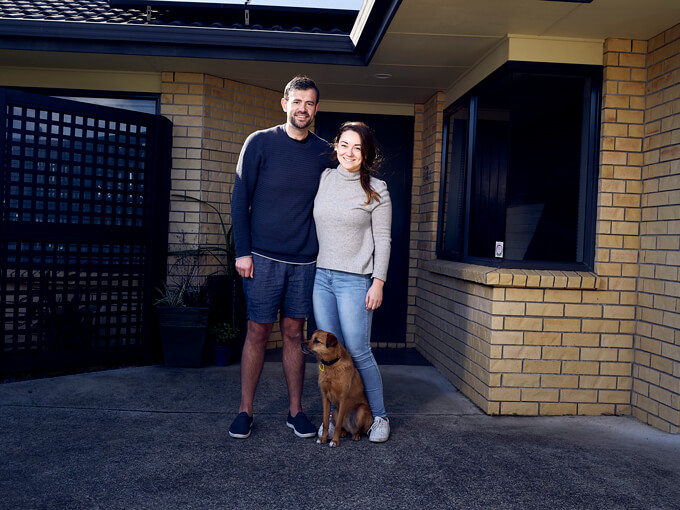
Renter Kara Shanahan, suggesting people I could interview for this story, says: “Talk to them, they’re Onehunga hard.” Wrapped in a purple robe on a day-bed in her three-bedroom flat in Heretaunga Ave, the 21-year-old is telling me how much she loves living here. Her flatmates, Hannah Birdsall, 22, and Beth Maynard, 21, are equally enamoured of the suburb.
To be fair, most people who live around here are pretty Onehunga hard. Shanahan, Birdsall and Maynard have been in their place for nearly two years and they love the neighbourhood. They moved together from Ellerslie when their old flat burned down; a silver lining is how much more they enjoy living in Onehunga than the “much-less-friendly” Ellerslie.
“There’s definitely more of a community feeling,” Birdsall says. “Everyone always says hi and you see the same people around all the time.” When they popped into local bar the Trident for a drink the other week, the bar staff recognised them from months ago, and a few locals insisted on teaching them how to play pool.
The trio are worried about gentrification, because if their rent rises much above the current $630, they’ll have to move on. Things are “undoubtedly changing” in Onehunga, they say. Having grown up on the North Shore and in the central city, they would be sad to have to move, because this is their home, but recognise it’s not the same as being priced out of a suburb you’ve spent your entire life in. “I imagine it’s probably terrifying for people who have grown up here and raised their kids here,” Maynard says. “Things are getting nicer and nice cafes and nice libraries are fantastic, but it’s different to people getting pushed out because rents are getting higher.” I ask where their flat fits in with that; they didn’t grow up here, they’re white, they’re in tertiary education — aren’t they part of the wave of gentrification? They argue they aren’t, because they’re renters, not homeowners.
It makes sense not to count yourself as part of cultural change, if it’s implicitly assumed that change is bad. But sometimes change is just change, without a moral weight attached to it. The same way Mr T’s was just a cool new cafe and not a harbinger of doom, students coming to Onehunga because it’s got heart, nice places to eat and relatively affordable rent signals a shift that’s neither inherently good nor bad. What can’t be argued is that a flat full of students is qualitatively different from a family home.
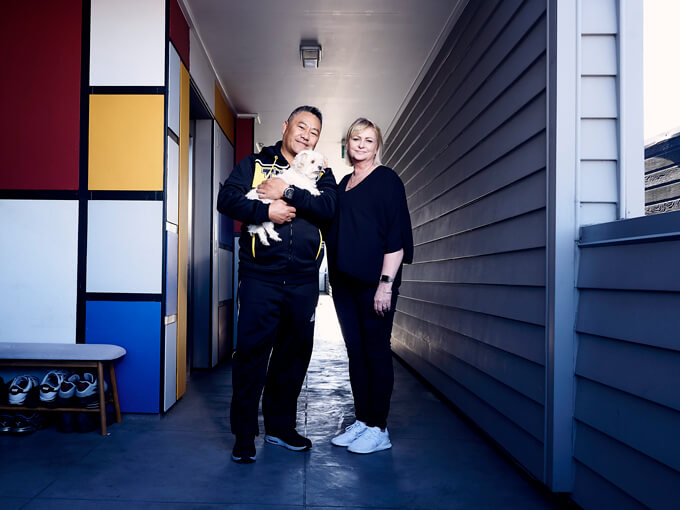
As you wander to the mall from their street — brick houses on big sections with bare lawns and cars parked on the grass — you can see the houses get “richer” — fences get higher, Land Rovers start appearing in driveways, the villas have been renovated and repainted. It feels more like Mt Eden, they say. Perhaps unlike Mt Eden, though, people are very much up on each other’s business.
“People definitely look out for each other,” Shanahan says. “The other day, I was sitting out the front and I was having a dart and, you know, sad and some school kids came and asked if I was all right.” Her flatmates chime in: people always come out and check if everyone’s okay if they hear arguing; people stop and chat to you on the street. When a busker was assaulted and seriously injured in late June, local MP Denise Lee used the Onehunga Local Community News Facebook page to organise the signing of a huge card to take to him in hospital. A photo posted online showed it full of best wishes. Lee also solicited donations of fresh clothing for the man, known only as Wilson, for when he was discharged.
Each part of that story reflects something true about Onehunga: it’s a suburb with incredible community spirit and kindness, yes, but it’s also where violence, though not common, is also not unheard of, either — the attack on Wilson the “gentle giant” busker was the third violent assault in a week. Ash Ah Ta remembers an idyllic childhood here, and the spate of attacks worries her. That’s partly why, despite being a staunch Labour supporter, she’ll be voting for Lee, a National MP, in the next elections — because Lee is invested in the community and really seems to care that people are safe. After Wilson was assaulted, Lee called a public meeting about safety in the community. That kind of thing matters to Ah Ta. “All we can do is vote for the right people who care about the area as much we do. I don’t mind at the end of the day which party you’re from, as long as you care about us enough.”
This piece originally appeared in the September-October 2019 issue of Metro magazine, with the headline “A suburb in flux”.
An earlier version of this story incorrectly attributed the Onehunga Mall upgrade and Taumanu Reserve project to Panuku Development, an Auckland Council organisation. In fact, Auckland Council delivered these projects. Metro regrets the error.

